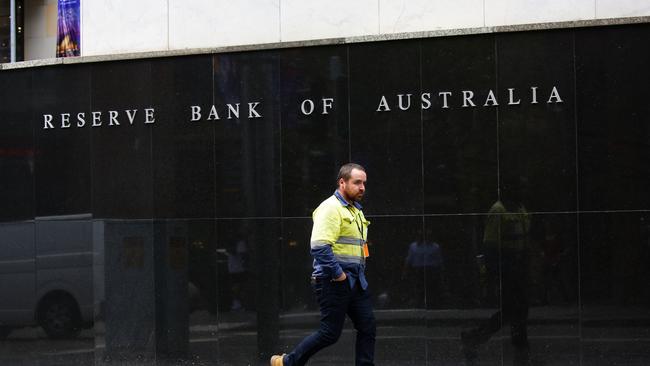RBA hits $100bn bond-buy benchmark
The Reserve Bank will have spent more than $100bn propping up the economy this week — a milestone halfway through its bond-buying program aimed at pushing the dollar lower.

The Reserve Bank will have spent more than $100bn propping up the economy this week — a milestone halfway through its bond-buying program aimed at pushing the dollar lower.
The RBA at its meeting on Tuesday will hail a post-COVID economic recovery that has run ahead of even its most optimistic scenarios, but will nonetheless remain committed to keeping interest rates at near zero for the foreseeable future, economists and analysts said.
In a note to clients, investment bank Morgan Stanley said despite the stronger than expected recovery, there was “still significant uncertainty around the outlook”, noting the removal of the JobKeeper wage subsidy and a “vaccine rollout which is lagging early targets”.
“For these reasons, we think the RBA is likely to remain happy to lag any improvements in the recovery outlook,” the bank’s equity strategist, Chris Read, wrote.
RBA governor Philip Lowe has already set a high hurdle for rate hikes, and last month said unemployment would need to drop to as low as 4 per cent — and perhaps lower — before labour markets would be tight enough to send wages rising by at least 3 per cent on an annual basis. Without pay climbing at that pace, inflation won’t lift sustainably within the RBA’s 2-3 per cent target, he said.
The drop in the jobless rate to 5.8 per cent in February, from 6.3 per cent, is unlikely to alter RBA thinking that there will be no hikes until 2024 “at the earliest”.
Job vacancies reached 289,000 in February, the Australian Bureau of Statistics said last week, or 27 per cent higher than a year earlier before the pandemic struck.
Businesses noted labour shortages in some sectors but Citi economist Faraz Syed said these shortages were focused in low-paid jobs, suggesting “a pick-up in wages doesn’t imply an economy-wide increase in wage pressures”.
The end of JobKeeper in March and the recent COVID outbreak and three-day lockdown also argue against any softening in Dr Lowe’s resolve.
The consensus among private sector economists is the end of the wage subsidy will lead to a loss of 100,000 jobs. That could push the unemployment rate up by as much as 0.5 percentage points, according to UBS estimates.
Economists expect the central bank will extend the second phase of its quantitative easing program beyond its expiry in August.
Nomura Australia chief economist Andrew Ticehurst said at the current $5bn a week pace of buying, a third phase of QE would extend to January 2022, by which time the US Federal Reserve would begin phasing back its own bond purchases. “We feel pretty strongly that the RBA will not taper until the Fed does,” he said.
A key driver of currency valuations is the difference between the respective 10-year bond rates, with higher relative yields tending to translate to a stronger currency.
Despite the tens of billions of dollars spent by the RBA in the market to push up the price of Australian 10-year bonds (yields move in the opposite direction to price), the Aussie dollar is buying US75c, versus US70c in early November when the scheme was announced.
Propping up the dollar have been soaring commodity prices, particularly for key commodity exports, iron ore and coal.
The RBA says this does not show QE has wasted money, rather that yields would have risen higher, and the currency would have appreciated by more, had the program not been in place.
The central bank in its February Statement on Monetary Policy estimated its QE program had resulted in a 10-year yield that was 0.3 percentage points lower than it would have been otherwise.




To join the conversation, please log in. Don't have an account? Register
Join the conversation, you are commenting as Logout